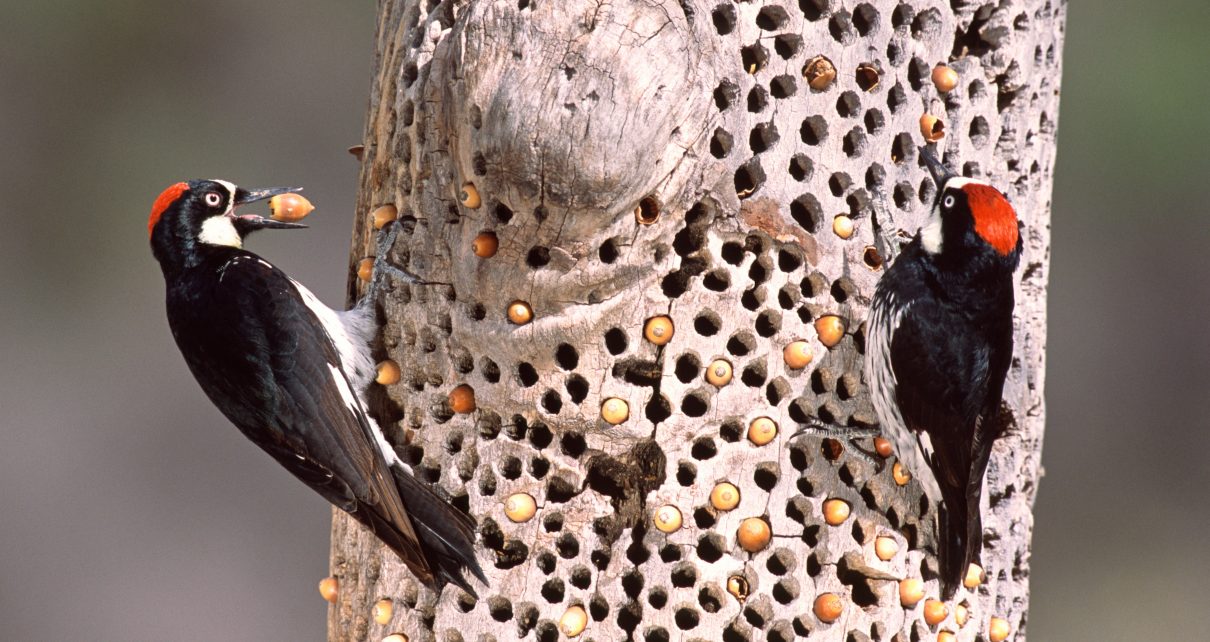The Americas’ western oak woodlands are fragmented into territories that are often fiercely contested—by groups of acorn woodpeckers. In each location, generations of the birds have transformed the oaks into granaries that store thousands of acorns. They nest in groups of breeding and nonbreeding members, which cooperatively raise chicks; when one member of a breeding pair in a granary-rich area dies, rival teams of nonbreeding birds sweep in from surrounding territories to fight for a chance to fill it. These internecine struggles can be deadly, involve multiple coalitions of warriors and last for days. Scientists have studied the skirmishes for more than 50 years—but they only recently discovered other woodpeckers were keenly observing the battles, too.
Sahas Barve, an avian biologist at the Smithsonian National Museum of Natural History, was the lead author of a recent study that tracked this behavior and was published in Current Biology. He and his colleagues discovered the spectator phenomenon by fitting dozens of birds with ultralight solar-powered radio trackers and monitoring their positions. “Power struggles are so chaotic that you can’t really [visually] track the movements of any one animal,” Barve says.
Biologists have seen news of a breeding opportunity travel through the woods with astonishing speed. “Because animals don’t have language, we often assume it’s harder for them to transmit information,” says Christina Riehl, an evolutionary biologist at Princeton University, who was not involved in the study. “They’re not posting about it on Facebook or talking about it in the streets.” Researchers do not yet understand how woodpeckers in surrounding territories find out about these openings, which can trigger battles within minutes.
The researchers were surprised that the combat attracted not only fighters but also birds that apparently came just to watch—sometimes from kilometers away—for up to an hour at a time. These spectators left their own granaries undefended, which suggests that the value of the intelligence they can gain about rival coalitions outweighs the risks of gathering it. “It helps you judge what you should do in a given situation,” Riehl says.
Monitoring the relationships between individuals in other groups (a trait biologists call triadic awareness) has rarely been seen among birds, according to Barve. The new observations show that the woodpeckers “have a very high-level understanding of social dynamics in their population,” he says. “It highlights how much we don’t know about how animals perceive and navigate a complicated social system.”


